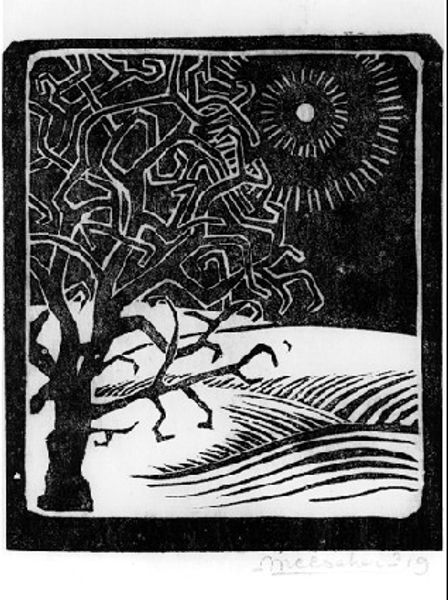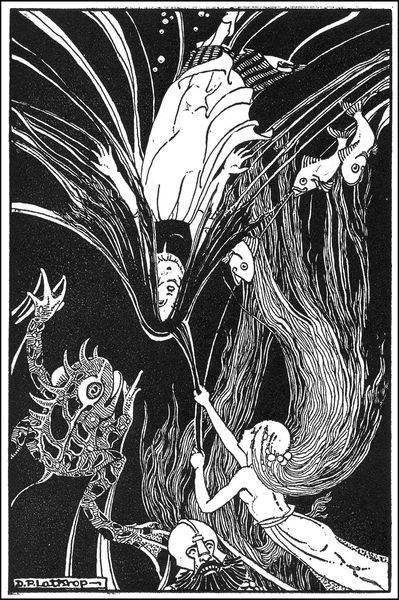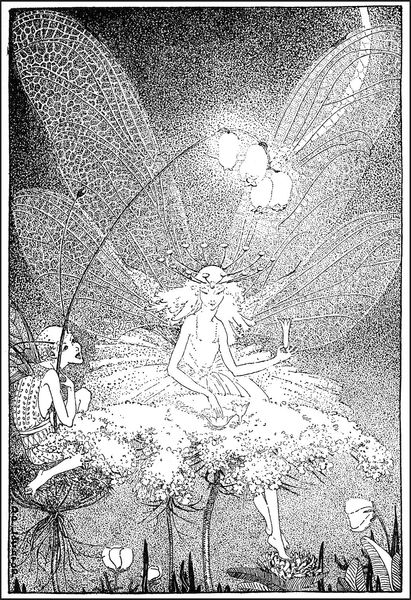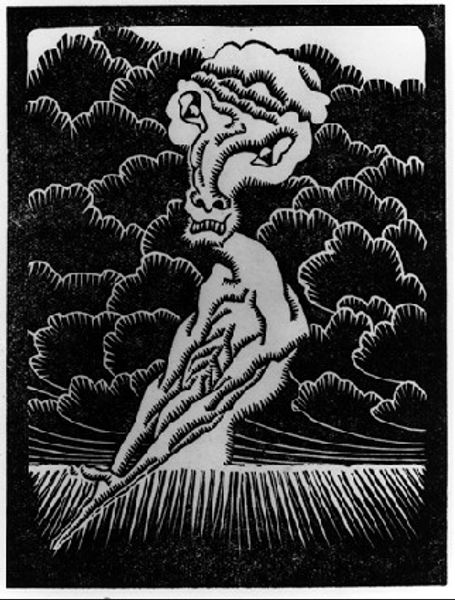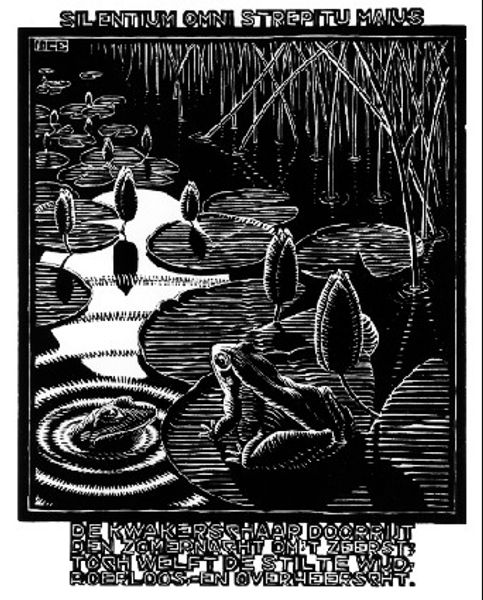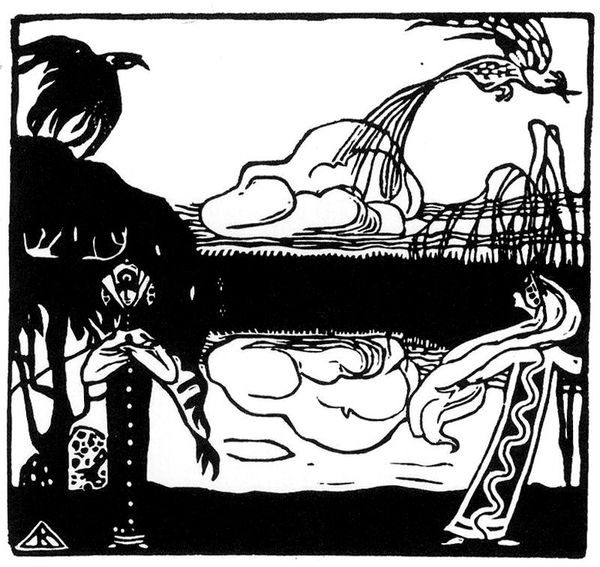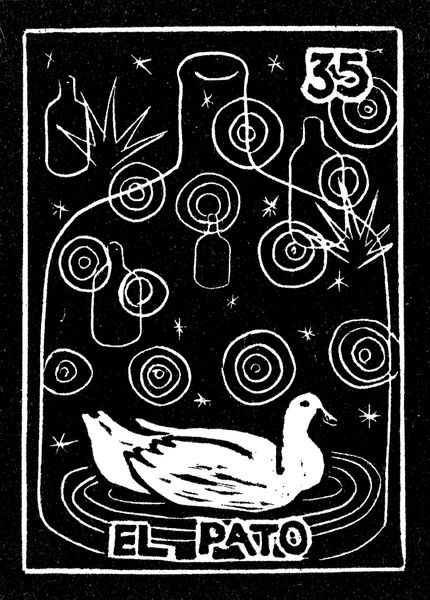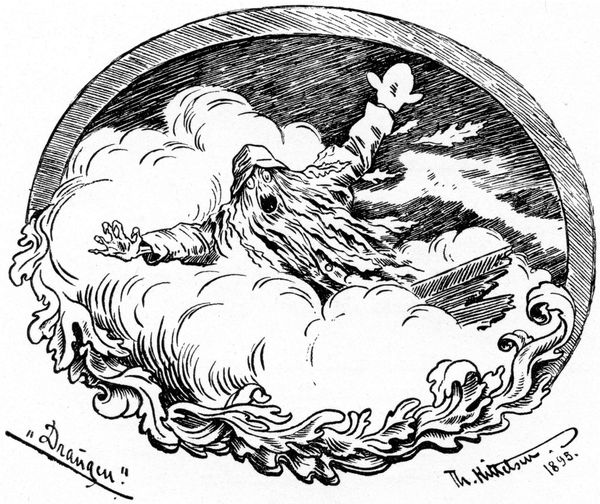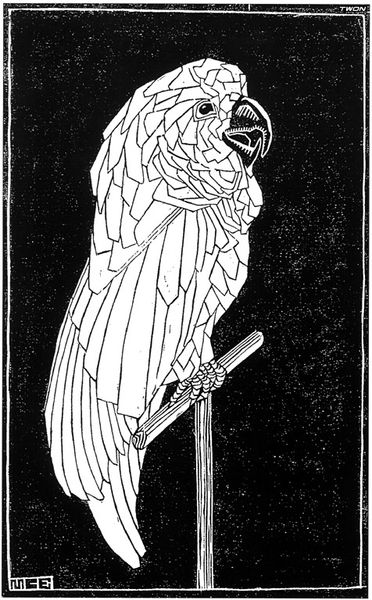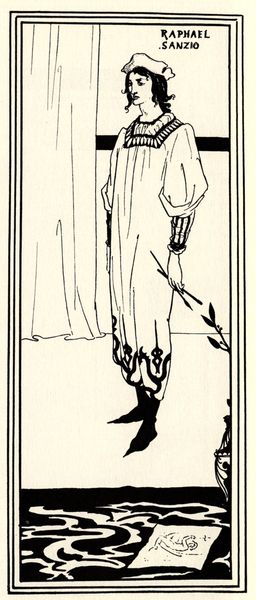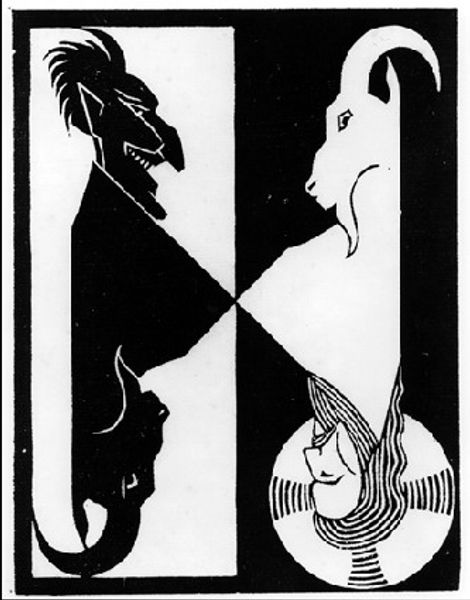
print, woodcut
# print
#
landscape
#
bird
#
form
#
woodcut
#
line
Copyright: Public domain US
Editor: So, we’re looking at M.C. Escher's “Flor de Pascua - The Weathercock” from 1921, a woodcut print. The contrast between black and white really makes it pop. What strikes me is how stylized it is. What do you see in this piece? Curator: From a materialist perspective, I'm interested in the process of its creation. This is a woodcut, right? Think about the labour involved: the artist carefully carving away at the wood, embracing the inherent limitations of the medium. It forces a simplification of form. Look at how the hatching suggests depth in the sky. Editor: Definitely. I hadn’t considered the physical act so much. Does the woodcut medium say anything about the social context of the art itself? Curator: Absolutely. Woodcuts were a popular and accessible printmaking method in the early 20th century. Unlike oil paintings that might signal elite patronage, woodcuts enabled broader dissemination of images to a wider audience. How do we reconcile this form's connection to mass production with art's perceived value and scarcity? Consider this against a backdrop of increased industrialization. Does this imagery represent the growth and change? Or the past? Editor: Interesting, so the choice of woodcut speaks to the democratization of art in a way. I see now the lines look manufactured but were not made by a machine! I assumed this to be related to the era's mass media production but it has older roots. Curator: Precisely. The deliberate engagement with craft is what defines art outside traditional boundaries, and makes it more than a simple, readily produced piece. We learn that the artist may be reacting against the machine rather than just leveraging them! Editor: That really shifts my perspective on the work. I was so focused on the stark imagery, but understanding the labour behind it is essential. Curator: Right, thinking about the materiality changes how you perceive this piece of art in culture. The act of physically cutting into wood to produce this is a deliberate choice, a dialogue about material and societal transformation of craft.
Comments
No comments
Be the first to comment and join the conversation on the ultimate creative platform.
